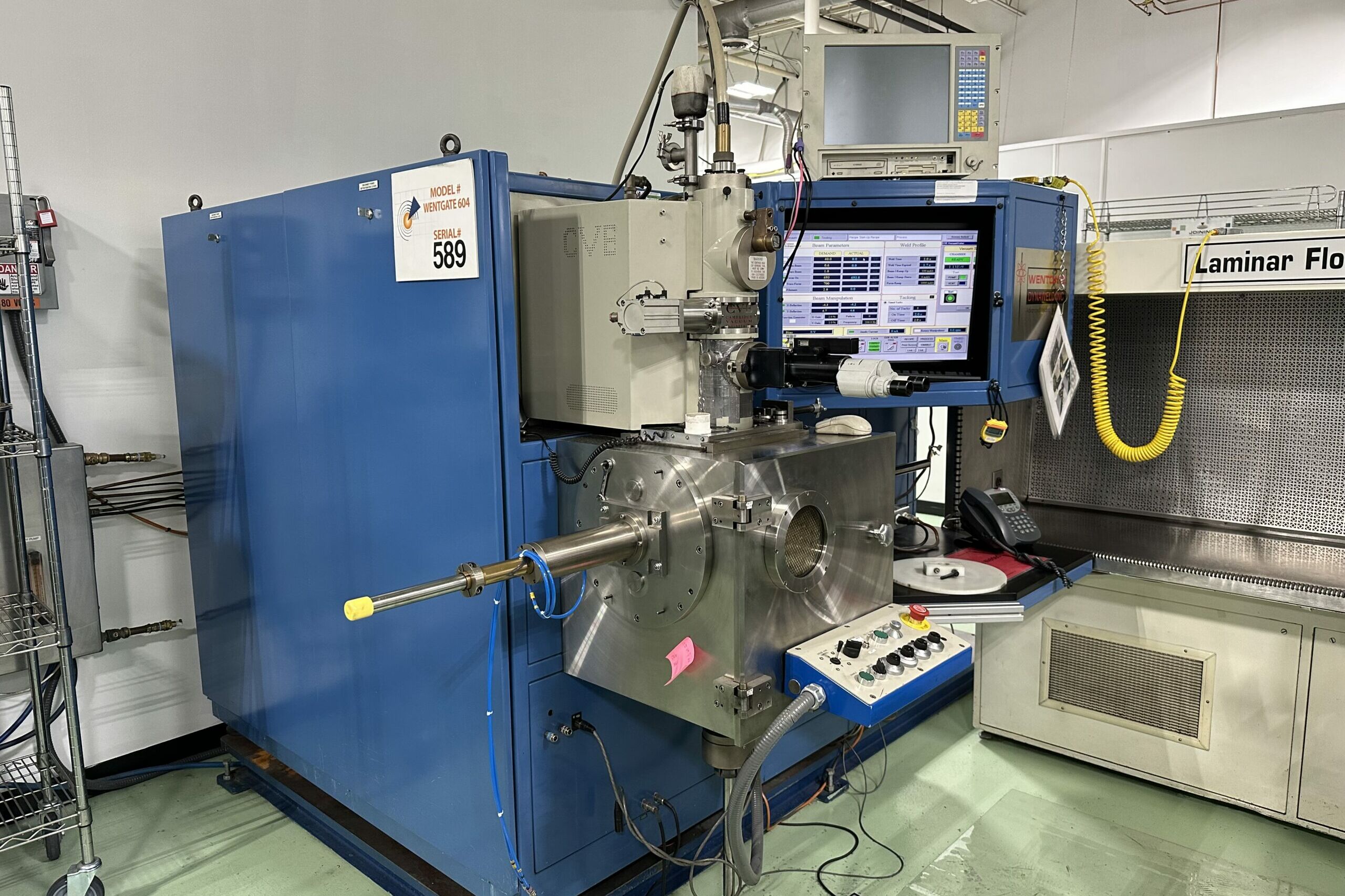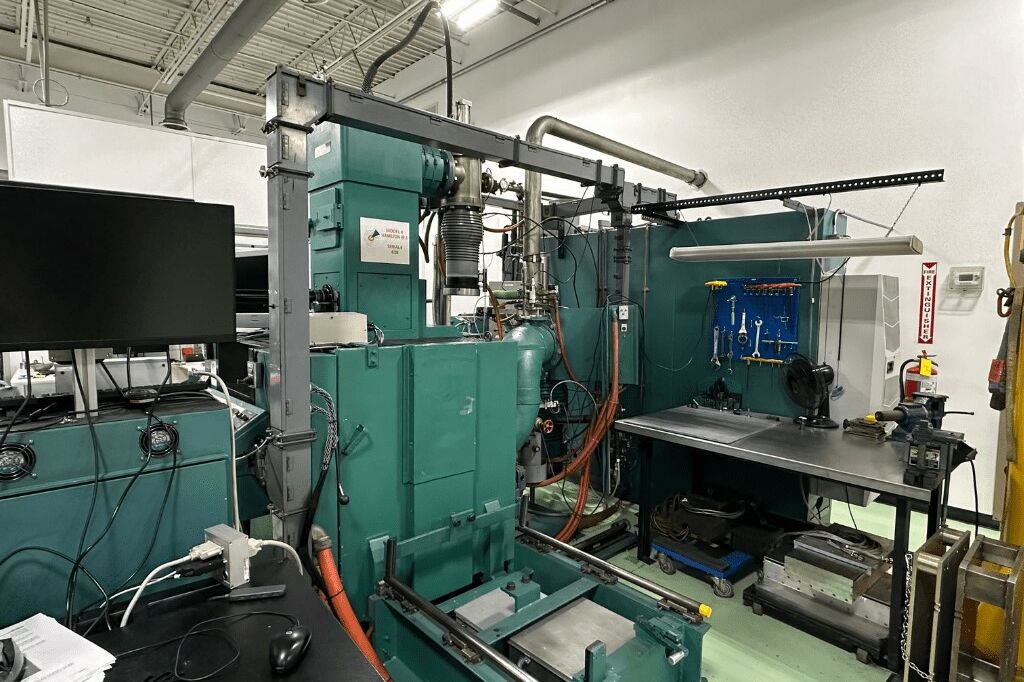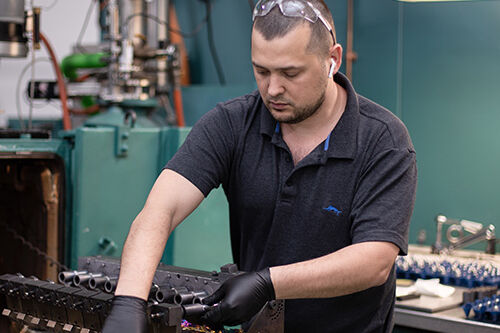Electron Beam Welding (EBW) excels in deep penetration welds with a narrow Heat-Affected Zone (HAZ) and low thermal distortion, making it ideal for precision machining. Its high welding speed suits high-volume production, and its versatility spans various material types. Executed in a vacuum, EBW ensures low contamination, making it a clean choice for industries from aerospace to nuclear power generation.
Electron Beam Welding (EBW) excels in deep penetration welds with a narrow Heat-Affected Zone (HAZ) and low thermal distortion, making it ideal for precision machining. Its high welding speed suits high-volume production, and its versatility spans various material types. Executed in a vacuum, EBW ensures low contamination, making it a clean choice for industries from aerospace to nuclear power generation.
Capabilities
- (4) CNC Controlled Electron Beam Welding Stations
- Power ranging from 3kW - 25kW
- Max capacity: 5' OD
- Max length: 6'
- Heavy duty rotational capacity
INDUSTRIES AND APPLICATIONS
- Fuel Nozzles
- Detonators
- Semiconductors
- Aerospace
- Medical Device
- U.S. Military Defense
- Automotive
- Energy – Oil and Gas
BENEFITS
- Deep Penetration - EBW can achieve deep weld penetration, making it suitable for joining thick materials with a high aspect ratio. This is particularly useful in aerospace and automotive applications
- Narrow Heat-Affected Zone (HAZ) - EBW produces a very narrow HAZ, minimizing distortion and reducing the risk of metallurgical changes
- Low Thermal Distortion - The minimal heat input and narrow HAZ result in low thermal distortion, ensuring that the workpiece remains flat and true, making this an excellent choice for precision machining and tooling applications
- High Welding Speed - Advantageous in high-volume production environments where efficiency is essential
- Versatility - Can be applied to a wide range of materials, including metals and dissimilar materials, making it useful for many industries from aerospace to nuclear power generation
- Low Contamination - Due to the process being performed in a vacuum, there is a reduced risk of contamination from atmospheric gases
Request a quote below!




